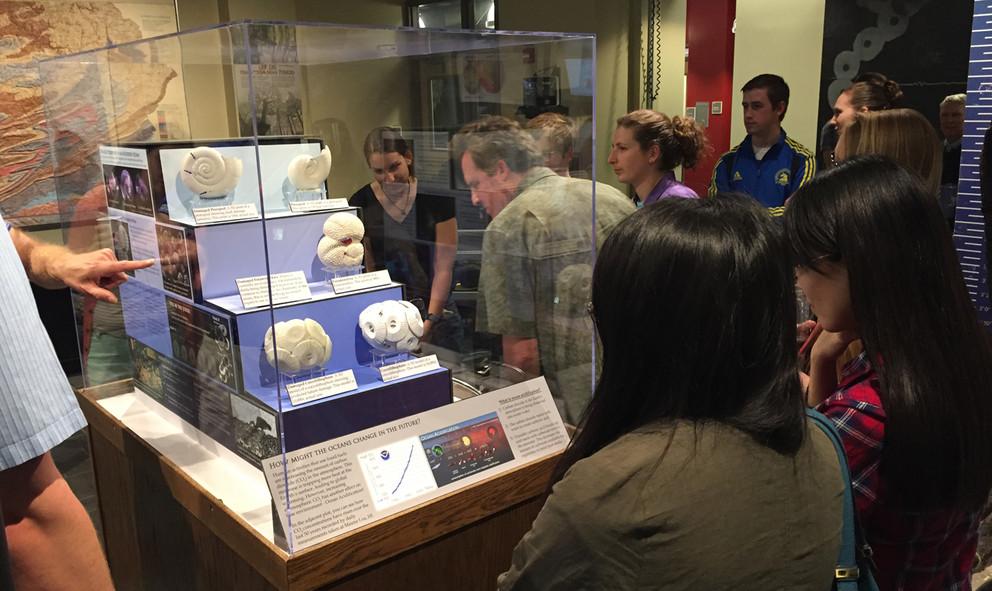Graduate Students 3D Print Exhibit Highlighting Climate Changes Effect on Vulnerable Ocean-Based Organisms
 We all know of the societal impact that 3D printing technology has had on various fields, from prototyping to medical research, but one vital application that is generally swept under the sea—so to speak—is its ability to aid in our current pollution crisis. Over the last month alone, we’ve reported on a couple of instances where 3D printing has been utilized to help fight the man-made rise in pollution. There was the 3D printed skimmer created by Chinese researchers to clean up oil spills, as well as research by the American University that used a mixture of 3D printing and chemistry to remove pollutants from the air and water.
We all know of the societal impact that 3D printing technology has had on various fields, from prototyping to medical research, but one vital application that is generally swept under the sea—so to speak—is its ability to aid in our current pollution crisis. Over the last month alone, we’ve reported on a couple of instances where 3D printing has been utilized to help fight the man-made rise in pollution. There was the 3D printed skimmer created by Chinese researchers to clean up oil spills, as well as research by the American University that used a mixture of 3D printing and chemistry to remove pollutants from the air and water.

The “Ocean Acidification and its Effect on Marine Life” exhibit at the EMS Museum & Art Gallery [Image: Kristen McAuley / Penn State]
“I use CT scanning for my research, which gives us an amazing three dimensional data set of these microscopic shells, which is a neat technique. But we realized that we could do a 3D printing as well to magnify the effects of ocean acidification,” said Oakes.
Using the 3D printing technology provided by Penn State’s Maker Commons, the team created a set of 6-inch reconstructions of three different oceanic microscopic organisms, which includes pteropods, coccolithophores, and foraminifera. These sets were showcased in both a neutral pH environment and a projected future environment, which magnifies the grave effects that climate change will potentially have on these creatures. Each CT scanned organism was scaled up from hundreds to thousands of times its actual size, which allowed visitors to see the deterioration of this fragile habitat with their own eyes.
Before the research project was unveiled on May 2, the students’ concept was originally refined through a seminar course taught in Fall 2015 by the EMS Museum & Art Gallery’s Russell Graham, Julianne Snider, and John Simmons. In addition to Oakes and Holschuh, others graduate students involved with the exhibit include Claire Cleveland, Garett Brown, Kim Foecke, Ashley Grey, Heather Jones, and Judi Sclafani.
Complementing the 3D printed reconstructions at the exhibit is a video on Penn State’s research on ocean acidification, as well as supplementary videos on how these microorganisms function and contribute to their ecosystem. The exhibit also includes a touch component, pioneered by the fellow graduate student Cleveland, which will allow visitors to actually feel the size of these microscopic creatures. With the “Ocean Acidification and its Effect on Marine Life” exhibit, these graduate students hope to amplify a major issue that may soon wipe out a vulnerable, yet vital ecosystem, and inform us all about another great threat we are facing due to climate change. Let’s discuss this topic further in the 3D Printed Oceanic Reconstruction forum over at 3DPB.com.
[Source: Penn State University]Subscribe to Our Email Newsletter
Stay up-to-date on all the latest news from the 3D printing industry and receive information and offers from third party vendors.
You May Also Like
Precision at the Microscale: UK Researchers Advance Medical Devices with BMF’s 3D Printing Tech
University of Nottingham researchers are using Boston Micro Fabrication‘s (BMF) 3D printing technology to develop medical devices that improve compatibility with human tissue. Funded by a UK grant, this project...
3D Printing Webinar and Event Roundup: April 21, 2024
It’s another busy week of webinars and events, starting with Hannover Messe in Germany and continuing with Metalcasting Congress, Chinaplas, TechBlick’s Innovation Festival, and more. Stratasys continues its advanced training...
3D Printing Webinar and Event Roundup: March 17, 2024
It’s another busy week of webinars and events, including SALMED 2024 and AM Forum in Berlin. Stratasys continues its in-person training and is offering two webinars, ASTM is holding a...
3D Printed Micro Antenna is 15% Smaller and 6X Lighter
Horizon Microtechnologies has achieved success in creating a high-frequency D-Band horn antenna through micro 3D printing. However, this achievement did not rely solely on 3D printing; it involved a combination...































